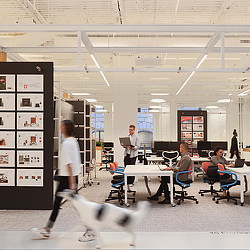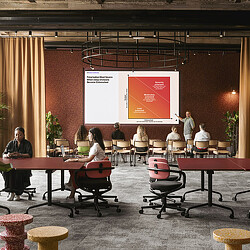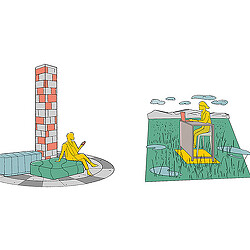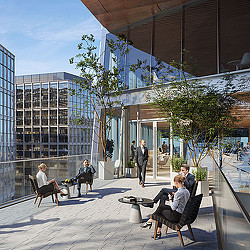Why Quality in Commercial Office Space Hinges on Workplace Experience
Demand is surging for premium office environments that deliver an effective workplace and an exceptional work experience.

As Amazon, JPMorgan, AT&T, and other companies across industries ask their employees to return to the office five days a week, there’s a renewed focus on workplace design.
At first glance, this would seem to solve the ongoing issue of the glut of empty office buildings in cities around the world. That’s not what’s happening.
As a recent Wall Street Journal article points out, there’s a paradox in the commercial real estate market. Companies are shunning outdated office locations, and the demand for premium office environments with top-tier amenities and easy access to transit is surging.
Despite record high office vacancies, companies are struggling to find the spaces they need.
We spoke with Gensler Global Director of Workplace Janet Pogue McLaurin about what’s driving this “flight to quality.”
There’s a glut of vacant Class B and C office space on the market, but many tenants don’t want to lease them. Instead, they’re willing to pay more for desirable locations, amenities, and premium quality Class A workplaces. What’s driving this trend?
For many companies, the pandemic presented an opportunity to “trade up” and lease a better-quality building or a more desirable location — whether they were right sizing space or looking for more square footage. This “flight to quality” has only continued.
Despite the glut in Class B and C office, today’s tenants are seeking higher quality office space, which we define as “a premier commercial office building compared to other buildings in the area.” For the U.S. metro areas, these are often referred to as Class A or Trophy office buildings.
In Gensler’s Global Workplace Survey 2024 research, we uncovered a direct correlation between building quality and workplace performance, which is defined as both an effective place to work AND a great workplace experience by the employees in the tenant spaces. We saw that high-performing workplaces are twice as likely to be located in a high-quality office building.

Our research found that how tenant occupants or employees feel about their employer actually improves with higher-quality buildings. As building quality increases, so do employee perceptions such as pride and commitment. They’re also more likely to stay with their company and recommend it as a great place to work.

Why do today’s workers like these premium spaces so much?
Today’s workers need two things: an effective workplace and a great work experience.
Employees need a functional and effective workplace that supports how they work. Providing a variety of work settings to work in-person with others, for hybrid meetings, and for work requiring high-concentration is essential and the foundation of a good workplace. But to meet today’s workers’ expectations, a “good” workplace is no longer sufficient.
Today’s workers also want a great workplace experience that evokes emotion and connection — where they feel inspired and valued, cared for as a person, and motivated to do their best work.
It’s not just about providing a great workplace but also being in the best location. The quality of the office building and the neighborhood services and amenities play a critical role not only in how people perform their work, but also how they feel about the work experience. This is driving not only a flight to quality, but also a “flight to experience.”
How can thoughtful workplace design and building quality make the difference between a “good” and “exceptional” workplace experience?
A good workplace is one that is not only an effective place to get your work done, but provides a great experience that feels beautiful, welcoming, inclusive, and inspires new thinking. But good is no longer good enough.
In the experience economy, people don’t aspire for same-same; instead, they’re seeking out new or varied experiences. An exceptional workplace differentiates by including unique factors — both in and out of the office.
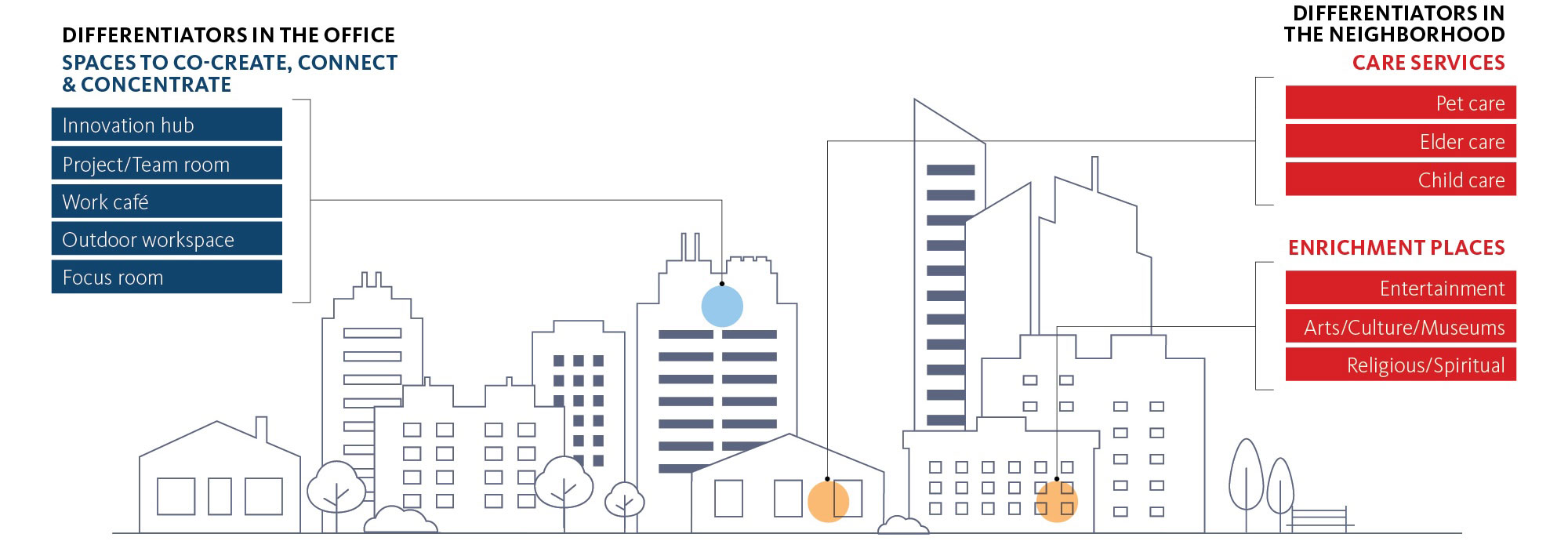
We’re not just talking about the workplace in isolation. The best options seem to be located in vibrant mixed-use districts. Can you talk about the idea of the “workplace ecosystem”?
Work and space are now uncoupled. Work occurs anywhere and everywhere. Today, we may check email from home early morning and take the first conference call from the gym on the way to office or a coworking space. Throughout the workday, we may work in and outside the office in transit, coffee shops, customer/client sites, or other third places, such as coffee shops, parks or outdoor roof decks/terraces, or even libraries. After the workday, we may stay in the Central Business District (CBD) to meet friends or colleagues for dinner, a sporting event, or concert.
Due to distributed teams and extended work hours, there is a blurring between life and work. Employees value access to amenity-rich neighborhoods to take advantage of nearby retail, restaurants, grocery stores, and entertainment venues before, during, and after the workday.
Our research found that tenants in vibrant city centers not only have more access to amenities, but they also use them more often than their lower-quality building counterparts.

Amenity-rich neighborhoods tend to attract high-quality buildings. In fact, we found that 80% of high-quality buildings are located in city centers or CBD’s that have a wide range of amenities that activate the neighborhood well beyond typical work hours.
That vibrancy can spur expanded amenities, such as retail, arts, culture, and museums — attracting not only workers and commuters, but residents and visitors. In turn, this creates the vibrant work/life/play districts where we all want to be.
For media inquiries, email .


